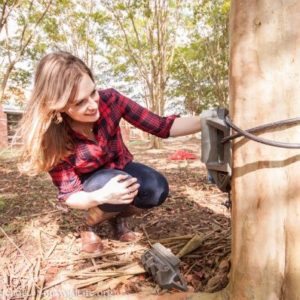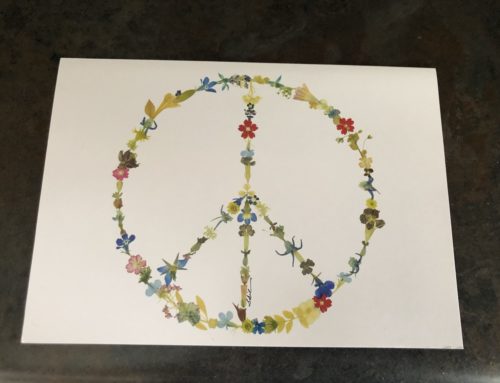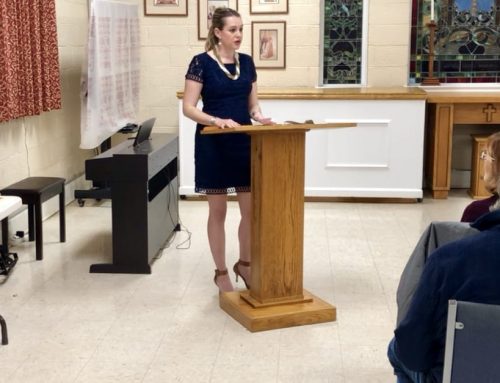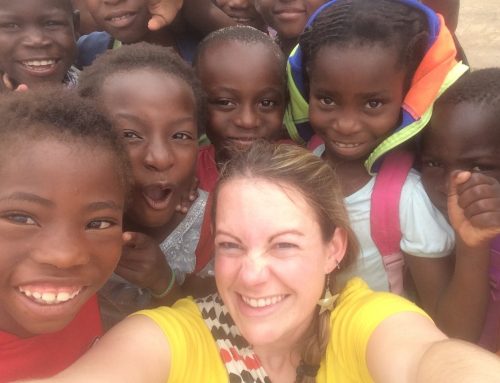This week’s profile features an interview with Stephanie Schuttler. I met Stephanie nearly two years ago through 20-30 Something Raleigh Chicks, a meetup group I’ve been organizing for over 6 years now. Another member had hosted a gathering to come to a fashion show I was walking in. We all connected at a nearby bar in downtown Raleigh and Stephanie said she was a scientist. You don’t meet too many women scientists so I found her fascinating.
After spending a several years on her doctoral work in Missouri, Stephanie moved to North Carolina in January 2014, to do research at the North Carolina Museum of Natural Sciences. Animals, education, and science have long been a passion of Stephanie’s, leading her to pursue a Bachelor’s of Art in Biological Sciences at the State University of New York at Buffalo, in New York, and a Ph.D. in Biological Sciences at the University of Missouri – Columbia. Her journey is exciting and inspiring.
- I haven’t met too many scientists, Stephanie. What did you want to be when you “grew up” and how has that evolved?
I didn’t really know what I wanted to be when I grew up! I always said a doctor because it was a safe career that made money and I was smart enough to do it 🙂 However, it wasn’t really my passion. I loved art, but I wasn’t brave enough to pursue a career in art. I thought the only options were starving artist! In college, I majored in theater and biology. At that point, I wanted to be an actor, but medicine was still my backup career. My brother suggested that I study abroad. As I was looking for programs, I came across a study abroad program in Kenya. I thought that I would never have the chance to go to Africa again, and in the bubble of a study abroad program, so I decided to do it. It changed my life! I decided to go into biology fully after this program. I had always loved animals, but didn’t realize that you could make a career out of it. In fact, I had always admired Jane Goodall, but didn’t want to move to the forests of Tanzania alone. Ironically, I had to go all the way to East Africa to realize that you could have a career in wildlife in the U.S., or one where you travel between U.S. and Africa among other places, which is what I do.
- That’s really cool! What do you do in your “day job” and why have you chosen that?
I’m a mammalogist at the NC Museum of Natural Sciences I study animals — mainly mammals — and how they interact with the environment. I study animals all over the world. Currently, we use camera traps to study them. These camera traps are heat and motion activated so that they automatically take pictures of wildlife as they walk by. It’s amazing because you can collect a lot of high quality data without harming or even seeing the animal. We then use the photos as data to answer questions about species’ abundance, conservation, and behavior. This project, eMammal, is conducted through citizen science research, which is a form of science that allows for the public to directly participate. I primarily work with teachers and we co-create lesson plans on eMammal for them to use in their classrooms, through a program called Students Discover. The students run camera traps conducting authentic science in the classroom. We then use the photos they collect in real scientific studies. The idea is to get kids to conduct REAL scientific research – notice patterns, come up with their own questions, and experiments or studies to answer those questions. I also study elephants. For my PhD research, I studied the social structure of African forest elephants by identifying individuals, creating social networks of their relationships, and using their dung as a source of DNA to determine the relatedness of individuals they were associating with.
- How happy have you been with your choices in life?
Very happy! I love my job. I have always loved animals and never even knew it was possible to get a job like this when I was younger. I get to travel the world and visit remote places and see things many people never get to. Although I got into it for the animals, I love meeting new people, learning about different cultures, and exploring new places.
- You’ve done so much. What are your best sources for learning?
For science, peer-reviewed publications, books, and conferences are a must. I try to go to different conferences, but my favorite one is the Society for Conservation Biology. For life in general, books and podcasts like RadioLab and Bulletproof are great. I honestly love self-help books. I love Tim Ferriss and books related to improving health through natural ways like your diet. I don’t tend to follow one thing; rather, I move from thing to thing. - What is your passion and why is it important to you?
Wildlife and conservation. When I was growing up, my favorite thing was looking for animals at night in Allegheny State Park, NY. We would visit over the summer and drive around the park with a spotlight looking for animals that only came out at night. I loved it! Raccoons were my favorite. We would also catch (and release) frogs, salamanders, snakes, and crayfish. I loved to look at them up close. As I got older, I saw some of my favorite wild places get torn down for new houses and it just made me sad. My passion is to get others interested in wildlife, especially kids. I want them to be able to form the same connections and have the same experiences that I was able to. Being in nature not only creates future conservationists, but it also has mental and physical health benefits. I always felt sorry for animals because they didn’t have a voice. I thought I could be their voice. - What do you devote your time to outside of “work?”
I have lots of animals (big surprise!), so I walk my dogs. I like to exercise — I only love Tracy Anderson, cook, paint, decorate my house, and shop because I love fashion.
- How do you feel most inspired?
Usually, after I give a talk. When I share what I do and people are interested in it and ask questions, I feed off of that energy. I love that people care. I love talking about wildlife and science and getting people excited about animals. I also get inspired from meeting with colleagues, especially at conferences. At scientific conferences, people present ideas. With these presentations, I get ideas, get inspired, get rejuvenated! - What causes and organizations are you most passionate about?
Anything to do with wildlife and conservation. Obviously eMammal, but also the Wildlife Conservation Society, African Wildlife Foundation, World Wildlife Fund, and the Society of Conservation Biology. As I have grown older in my career, I’ve realized that so many of the world’s conservation problems have nothing to do with animals, but the solutions rely on people. I’ve become much more passionate about reaching people, especially kids. I do this through my eMammal work, but I also recently started volunteering for the Raleigh Boys Club. After the election, when I saw the recent spike in hate crimes, I felt angry and helpless. I felt like I needed to do something and thought I could make the most impact by working with people who are the most vulnerable, yet the most malleable for change. I signed up at the Boys and Girls Club and was assigned to work at the Boys Club. So far, I love it! I help with homework, play games with them, and I am going to start a Nature/Science club. - Who do you look up to?
Jane Goodall. She went after what she wanted despite great criticism. She is the most famous living scientist and a woman when there were few women in science. She not only has made huge breakthroughs in science, but she also got people to genuinely care about chimpanzees. She was one of the first scientists to name the animals she studied, which allowed the public to connect to the animals more. She devoted the latter part of her career completely to outreach, trying to get people to care about not only chimpanzees, but all animals and all of nature. She is so brave! She moved to Tanzania and lived with chimpanzees sometimes completely alone. I can’t even imagine doing that. - Best and worst advice you’ve ever received?
Best – it’s so simple, but it came from Ray Semlitsch, a scientist at Mizzou, who has now passed away. He said to just let things roll off my back. In science, you get TONS of criticism and rejection. It’s really tough to take it all. You can’t take it personally. I would take in the negative comments for improvement, but let any that felt personal roll off my back.
Worst – It’s not really advice, but I learned through trial and error to be myself. There aren’t a lot of women in science who like the things I like – fashion, pop culture, etc. So at points I would hide those aspects of my life. But that’s what made me distinct and different. I know I stick out, but I like to think it’s a good thing now and I’ve tried to use it to my advantage, hence my Instagram and Twitter username.
Connect with Stephanie on LinkedIn and take a look at her website.
Thanks for reading Stephanie’s story. Share in the comments how it impacted you or share it on social media. Check out next week’s weekly post on Women & the Ways We Work. Missed the others? Take a look at my blog to read the others. Know someone you think should be featured? Can I help you or your organization with a storytelling project? Contact me and let’s chat.





Leave A Comment
You must be logged in to post a comment.